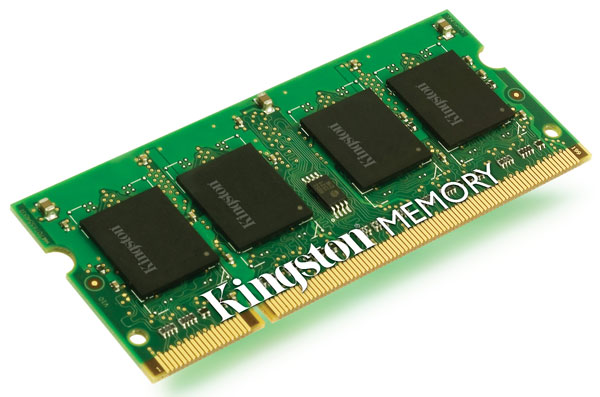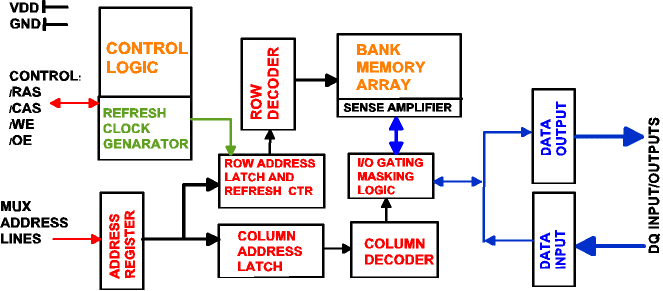Random-access memory (RAM) is a form of computer data storage is an integrated circuit which allow stored data to be accessed in random order. It is a volatile types of memory where the information is lost after the power is switched off. 
Similar to a microprocessor, RAM is a memory chip with integrated circuit (IC) made of millions of transistors and capacitors. In the most common form of computer memory, dynamic random access memory (DRAM), a transistor and a capacitor are paired to create a memory cell, which represents a single bit of data.
The capacitor holds the bit of information 0 or 1. The transistor acts as a switch that lets the control circuitry on the memory chip read the capacitor or change its state.

A capacitor is able to store electrons. To store 1 in the memory cell, the capcitor is filled with electrons. To store 0, it is emptied. The problem with the capacitor is that it has a leak and in a few milliseconds can become empty. Therefore, for dynamic memory to work, either the CPU or the memory controller has to recharge all of the capacitors holding 1 before they discharge. To do this, the memory controller reads the memory and then writes it right back. This refresh operation happens automatically thousands of times per second.
Rambus Dynamic RAM
Rambus Dynamic RAM (RDRAM) is a video RAM designed by Rambus that includes a proprietary bus that speeds up the data flow between video RAM and the frame buffer. It's optimized for video streaming.
Rambus Dynamic RAM (RDRAM) is a video RAM designed by Rambus that includes a proprietary bus that speeds up the data flow between video RAM and the frame buffer. It's optimized for video streaming.
VRAM (Video RAM)
This is higher-cost video memory and twice the speed of DRAM.
Two Dual-ported, meaning a new image can be stored in RAM while a previous image is being sent to the display .
This is higher-cost video memory and twice the speed of DRAM.
Two Dual-ported, meaning a new image can be stored in RAM while a previous image is being sent to the display .
 ශිල්ප 64
ශිල්ප 64